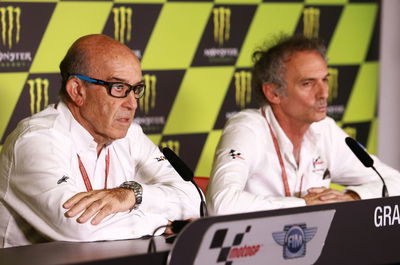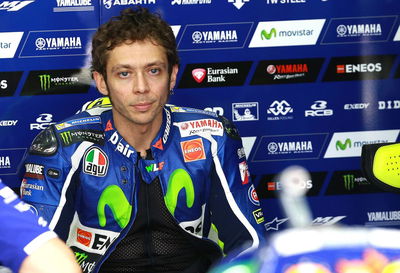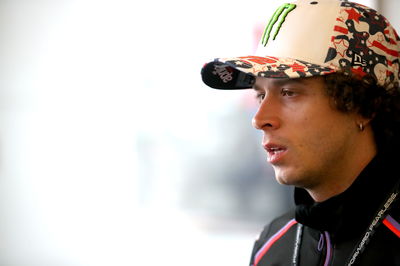Luis Salom accident still a mystery

MotoGP officials do not yet know what caused Luis Salom's fatal Friday accident in the Moto2 class at the Grand Prix of Catalunya.
The 24-year-old was tragically killed after falling at the high-speed penultimate turn, blurry security camera footage showing Salom sliding behind his bike across the asphalt run-off and into the airfence.
The fact that Salom and his bike hit exactly the same section of airfence, with tragic consequences, suggests the Spaniard may have lost control before even leaning in to the corner.
"It's important to say that today we don't have an explanation regarding the accident," said Dorna CEO Carmelo Ezpeleta. "I went there and you can see the tyre marks. The place where Luis fell is absolutely outside [the normal line].
"He was not taking the line to take the corner. Something happened. We don't know exactly what. We are studying the bike and the telemetry and other things.
"But even if it is something strange that we cannot explain; if it happens once it can happen again. So we said we cannot continue exactly as it is and the Safety Commission took the decision [to change the track]."
Ezpeleta added that there had not been a request to change Turn 12 before the accident.
Responding to questions about the lack of a gravel trap, FIM Grand Prix Safety Officer Franco Uncini explained that gravel can be more dangerous if a rider is still on the bike.
"The FIA requested the asphalt [for F1] and in some places asphalt run-off is also necessary [for bikes]. For example when you go straight, because you can continue to brake on asphalt. But if you don't crash and then have to brake on gravel, you will crash for sure.
"We tried the new section two years ago, but the riders said it was better to keep the old layout."
The former 500cc world champion confirmed that Salom's injuries appeared to be caused by an impact with his bike.
"The airfence worked. Mainly, most probably, the problem for Luis was that he went [into] the bike. So he did not hit the airfence but hit the bike. The bike rebounded and it was a fatal incident."
In the absence of a clear reason for the incident, the decision was made to switch to the F1 layout. This saw Turn 12 replaced with a tighter right-hander, leading into a chicane, plus a tighter section at the end of the back straight.
"We talked with the Safety Commission members, including ten riders, and they said 'okay, we have this possibility to have another layout'. At any other circuit this would not have been a possibility," Ezpeleta said.
"We went there and they said 'no' to continuing with the same layout [until we know what happened]. But they also proposed moving some walls and things at the F1 chicane. So we made a lot of work yesterday moving walls, moving the edge of the track, creating gravel run-off and adding air fences. And finally they agreed unanimously with this solution.
"If we continue [in future years] with this layout there will be some more modifications. When we have all the information about what happened and the data, we will decide in the Safety Commission whether to continue with the old or new layout."
Speaking about safety in general, Ezpeleta admitted that ever-increasing top speeds are a concern, but that there is no easy solution.
"The Safety Commission has always explained that if there is less speed in the straight it is better," he said. "But also we gave a Grand Prix Commission with FIM, IRTA, Dorna and MSMA to discuss technical things. It is not easy to reduce the speed limit because the [valve] system of the engines are different.
"If you [limit] revs, which is the easiest way, it impacts different engines differently. Of course MSMA is studying possibilities to do that and we are working but to be honest it is not easy."












